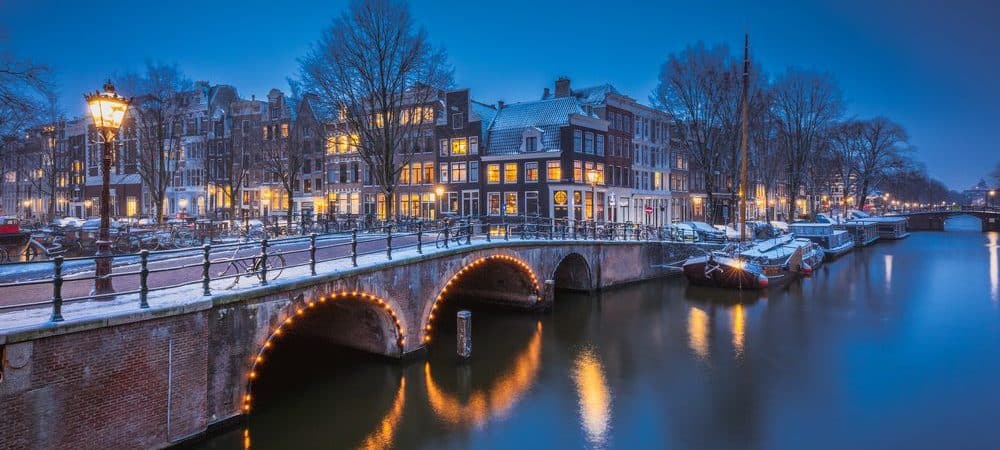
Bridges in Amsterdam
Amsterdam and its many bridges are inseparable, forming the heart of the city with their rich history, diverse styles, and daily use. From the Magere Brug, which is the most photographed, to the meticulous maintenance these structures require over the years, each bridge tells its own story. This overview takes you through the most important aspects of Amsterdam’s bridges, the canals they span, and the sights they connect.
How many bridges are there in Amsterdam?
The municipality of Amsterdam has no fewer than 1900 bridges. Especially in the inner city, you can’t ignore them. Each bridge has its own story and charm, which makes the city extra special.
Numbering of the bridges
The numbering of Amsterdam’s bridges is a practical system that provides overview and structure to the city. Each of the 1900 bridges is assigned its own unique number. This numbering system plays a crucial role in various aspects of city management and navigation.
For the management of the bridges, this system is essential. It allows the City of Amsterdam and maintenance departments to quickly and easily find information about a specific bridge. Whether for repair work, inspections or upgrades, each number refers to a specific location and bridge. This makes the process of maintenance and management streamlined and clear.
The Magere Brug
Location: The Magere Brug lies across the river Amstel, between Keizersgracht and Prinsengracht, in the heart of Amsterdam. The bridge connects the city’s Kerkstraat with Nieuwe Kerkstraat.
The Berlagebrug
Location: The Berlagebrug is a major road bridge that crosses the Amstel River, connecting the Rivierenbuurt on the south side of the city with the Eastern neighborhoods. The bridge is located at the end of Berlage Street, named after the famous Dutch architect Hendrik Petrus Berlage.
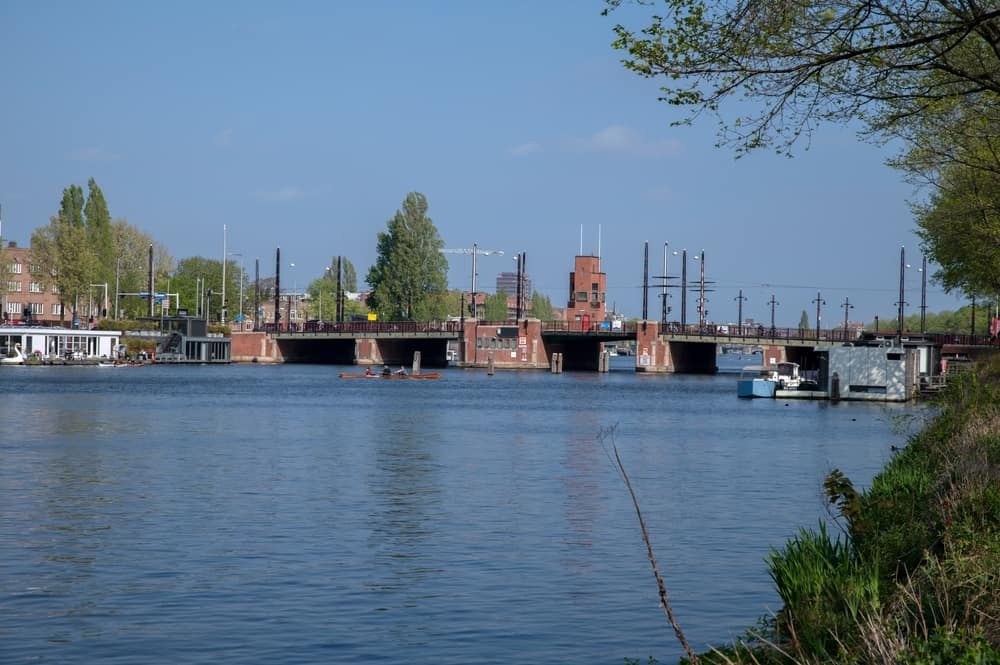
The Pythonbrug
Location: Officially known as Hoge Brug, the Pythonbrug is located in Amsterdam’s Eastern Docklands, connecting Borneo Island with Sporenburg-eiland. This pedestrian bridge is part of a series of bridges that contribute to the unique urban development of this area.
Which bridge in Amsterdam is the most photographed?
The Magere Brug takes the lead as Amsterdam’s most photographed bridge. Especially in the evening, when the lights come on, this bridge provides a beautiful photo opportunity. This drawbridge acquired its current form in 1934, but the initial version dates back to 1670. Originally named the Kerkstraatbrug, it quickly became known as the Magere Brug due to its narrow width. According to a popular but unconfirmed legend, the bridge is named after two sisters who lived on opposite sides of the river and wanted to visit each other without taking a long detour. Illuminated at night, the bridge offers a romantic view, making it a beloved spot for both residents and visitors.
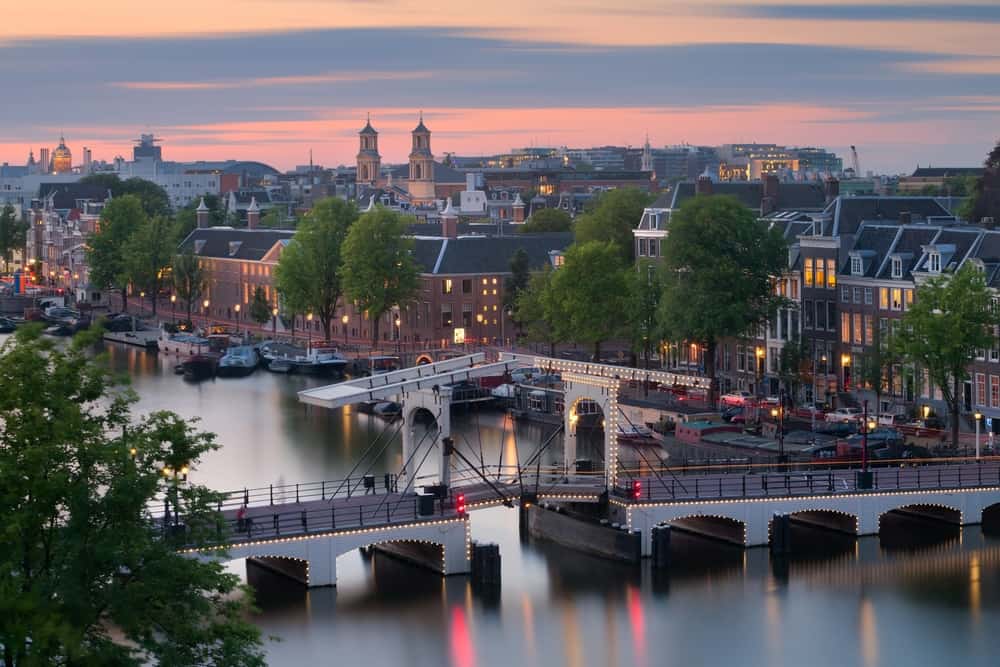
The history of Amsterdam’s bridges
Amsterdam’s bridges have a long history. Most bridges used to be made of wood, but over the years they replaced them with more enduring materials such as concrete and iron. Especially in areas such as the Western Islands, you can see this development. The history of the bridges tells a lot about the development of the city itself.
The history of bridges in Amsterdam shows how the city has grown and changed. Bridges used to be made of wood. That was convenient, but they didn’t last long. As Amsterdam got bigger and more people and things needed to move through the city, people started making bridges of concrete and iron. These materials are stronger and last longer.
The change from wood to concrete and iron shows that Amsterdam was becoming a modern city. It also means that the city became more important for trade and people from different parts of the world. The different types of bridges you see in Amsterdam today tell stories about how the city has changed over the years.
In short, the bridges in Amsterdam are more than just ways to get from one side of the water to the other. They show us how Amsterdam has grown from a small place to the big, well-known city it is today.
What is the oldest bridge?
The Torensluisbrug bridge is the oldest bridge in Amsterdam and was built in 1648. You will find this bridge in the middle of the city and it crosses the Singelgracht. What makes this bridge special is not only that it is the oldest, but also how well preserved it is. Over the centuries, Amsterdam has gone through many changes, but the Torensluisbrug still stands. That shows how strong and well-built this bridge is. It is a piece of history that you can still see and use, right in the middle of the modern city.
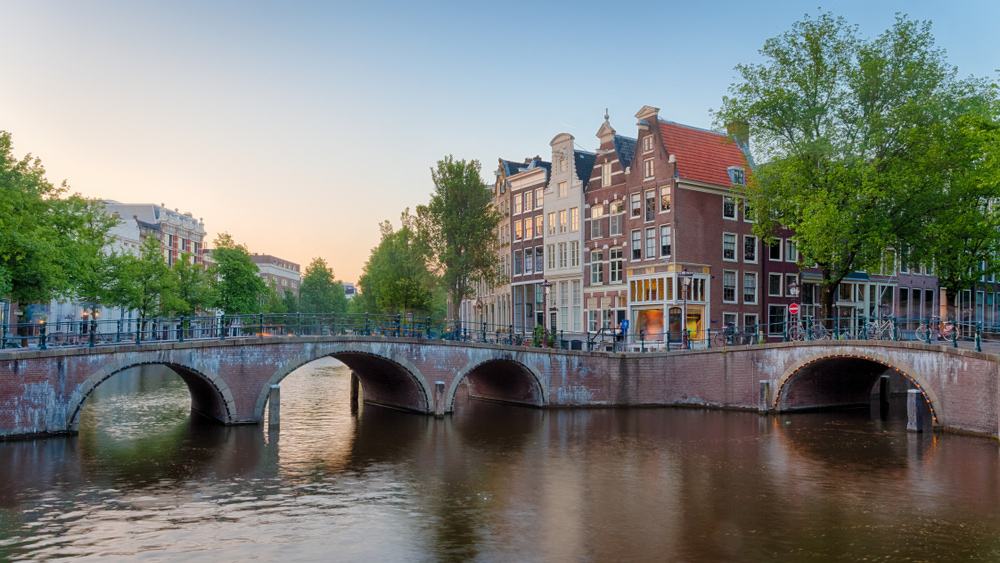
The Amsterdam School and bridge design
The influence of Jan van der Mey and Piet Kramer on Amsterdam’s bridges cannot be missed. These architects, associated with the Amsterdam School, defined the appearance of many bridges in the city. Their unique style, which is both functional and decorative, can be seen in the extraordinary design of the bridges.
What types of bridges are there in Amsterdam?
Amsterdam has a diversity of bridge types. We’ve listed them below.
- Beam bridges: Simple bridges with a straight path supported by beams.
- Arch bridges: Characterized by their curved shape, which provides strength and a stylish look.
- Drawbridges: Recognized by their movable part that can be pulled up to allow boats to pass through.
- Bascule bridges: Have a tilting part that opens like a lid, allowing ships to pass.
- Swing bridges: These bridges rotate on their axis to create a passage for water traffic.
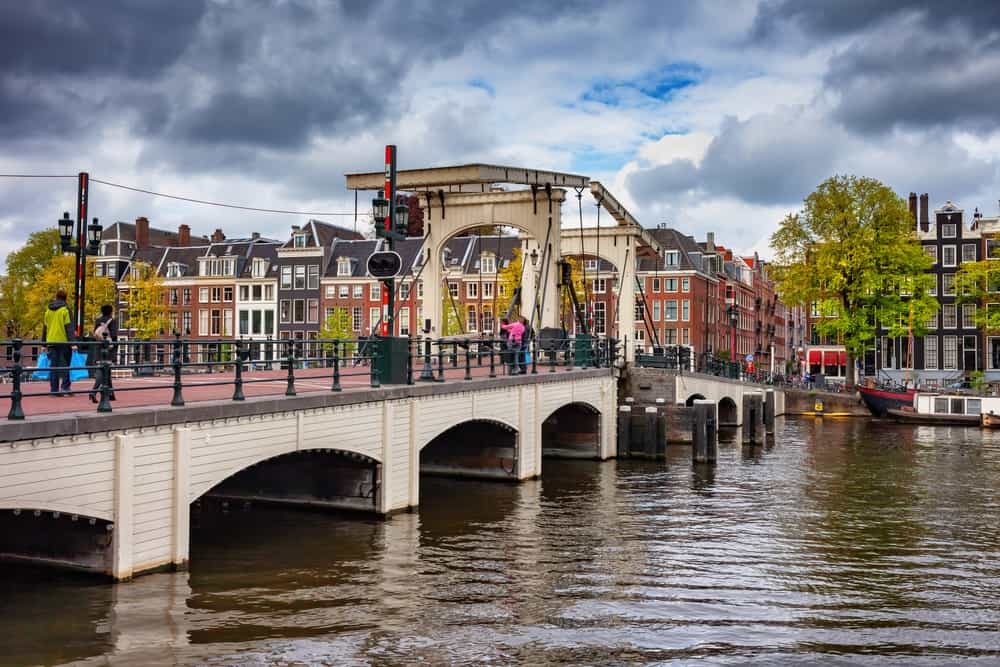
How are the bridges maintained?
To keep the bridges in Amsterdam in good shape, there is a continuous plan. First, people who know a lot about bridges regularly check how each bridge is doing. They check that everything is still sturdy and safe. If they find something wrong, they fix it right away. Sometimes a bridge is so old or damaged that it needs more than a minor repair. Then they renovate the whole bridge so that it will last for years. All this ensures that the bridges are safe for everyone and will last for a long time. So maintaining Amsterdam’s bridges is a constant ongoing process to ensure they remain safe and functional.
Everything about Amsterdam
Amsterdam is more than just its bridges. The city boasts a rich history, vibrant cultural life, and a unique urban layout. From the historic city center to the modern suburbs, Amsterdam continues to captivate.
Amsterdam’s canals
Amsterdam’s canals are the heart of the city. They are not only crucial for water management, but also determine the unique character of the city. Along the canals you will find historic buildings, cozy cafes and, of course, the famous canal houses.
Sights of Amsterdam
Amsterdam is bursting with sights. From the Van Gogh Museum to the Anne Frank House, and from the lively markets to the serene parks, there is always something new to discover. Don’t forget to take a boat tour of the canals to see the city from a different perspective.



